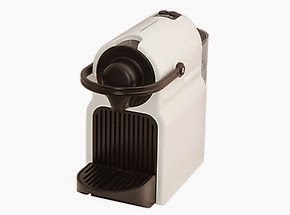Smarter solutions for a better coffee making experience (Part 2)

Let’s continue our exploration of the contextual intelligence domain and see how simple things in our everyday life could potentially be affected by this development. Our goal in this blog series is to design a context-sensitive, smart Nespresso Machine that can provide us with exactly the right cup of coffee at the right time and that can support us in performing simple maintenance activities. In my previous post we looked at the variables of preparing a cup of coffee with a Nespresso Machine: Brewing ratio: ristretto, espresso or lungo Additions: sugar / sweets, coffee milk / coffee milk powder, steamed / frothed milk Flavor Intensity Other important aspects like temperature and pressure were left out of the list, because they cannot be influenced with a setting on the machine. Relevant Context Variables So, what are the relevant context variables that influence our choice of coffee. In my opinion all of these variables can influence our choice: Taste Flavor / sm...








